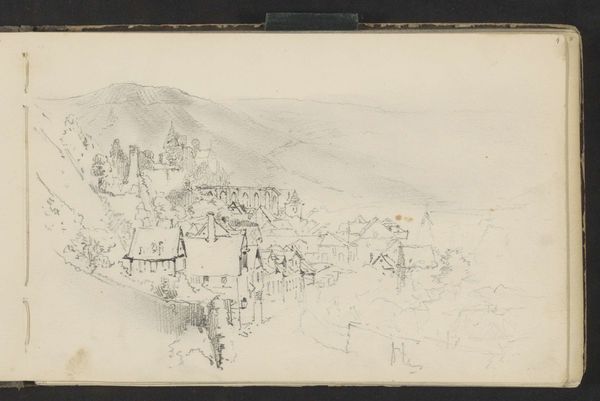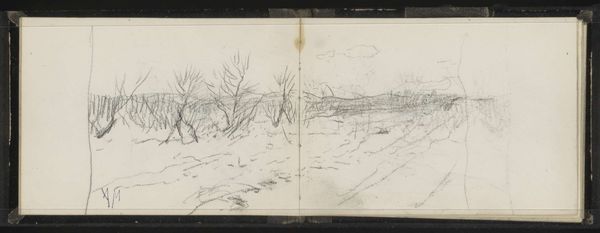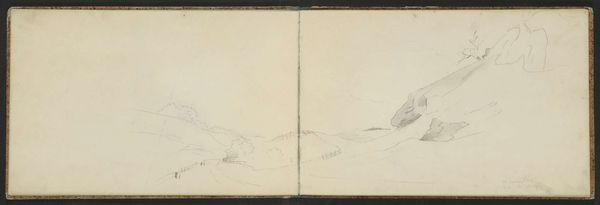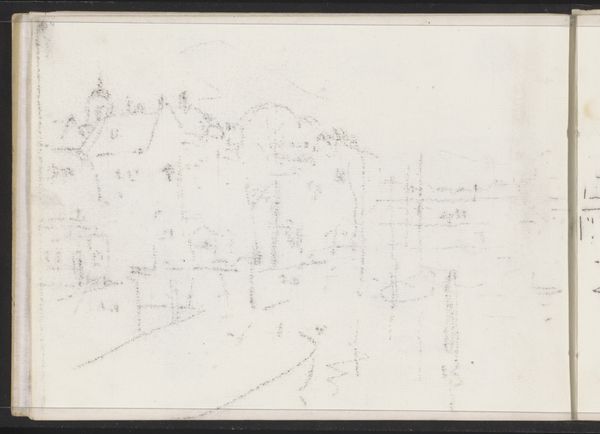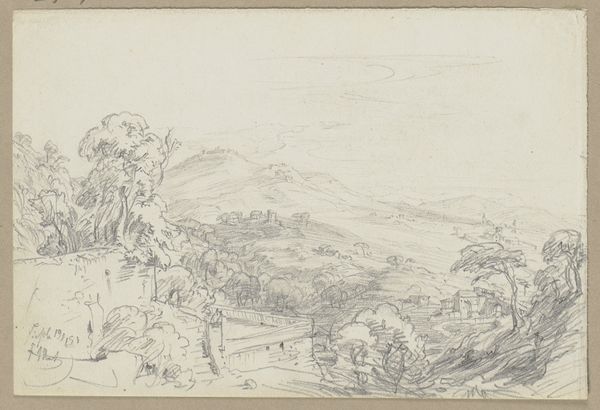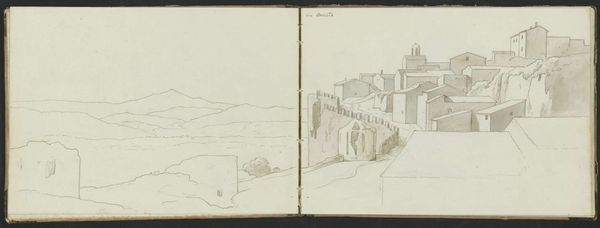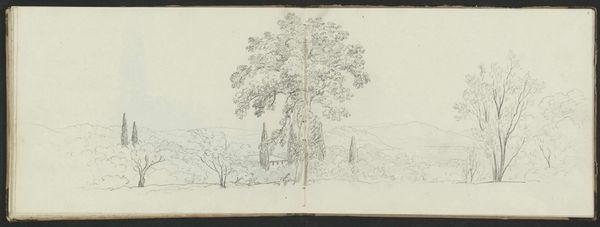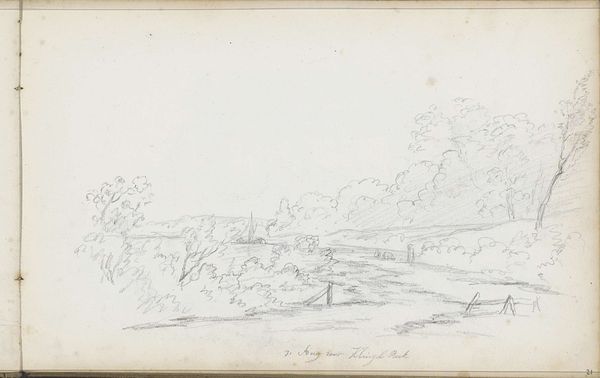
drawing, pencil
#
drawing
#
landscape
#
romanticism
#
pencil
#
cityscape
Copyright: Rijks Museum: Open Domain
Curator: Before us, we have Abraham Teerlink's "Gezicht op Caprarola," a drawing created circa 1808 to 1857. It's currently housed here at the Rijksmuseum. Editor: It strikes me as a study, or maybe even a preliminary sketch for a larger work. The lines are so delicate, the rendering almost ephemeral. It makes me wonder about the social standing of Teerlink and what role this type of sketch played for him. Curator: Indeed. As a drawing done in pencil, its immediacy and transportability provided artists an efficient method for documenting places they encountered while on travels, offering the patron a sense of realism without the cost of painting. How does Teerlink's treatment here affect the reading? Editor: Well, you have this sweeping view rendered using solely pencil. The level of detail, particularly in capturing the buildings, the layout of the terrain, it almost belies the immediacy you mention. Look closely. He is using hatch marks and stippling to build tonal depth, lending a strange sense of labor to what may otherwise be thought of as fleeting sketch work. This challenges some common preconceptions. Curator: Precisely. Landscape drawings like this, especially during the Romantic era, played a vital role in shaping public perceptions of the Italian landscape and culture. The romanticism tag on this drawing suggests a specific cultural moment of idealized pastoral scenes of untouched natures; these drawings in effect were commodities consumed back in The Netherlands. Editor: This particular vista—the town perched so precariously on the landscape and the distant palace overseeing its citizenry—creates a potent atmosphere. It’s less idyllic; it’s loaded with sociopolitical suggestion. Was he hinting at power structures or maybe capturing a looming threat? Curator: Interesting you say that, because Caprarola as a seat of the Farnese family was still very much linked to the memory of their grip on Papal power in the Renaissance, adding another later of political insinuation through these vistas of sites which were in fact social actors in time. Editor: Thinking about these factors together shifts the interpretation entirely. No longer just an untouched romantic scene, but an acknowledgement of complex historical and social structures which defined the relations of those whom were experiencing this "untouched" space. It is easy for museums and historians to ignore such simple truths when presenting objects like these. Curator: Absolutely. Reflecting on the means of this drawing's production and distribution sheds crucial light on the larger societal framework which influences both our readings, then and now.
Comments
No comments
Be the first to comment and join the conversation on the ultimate creative platform.
